Who’s Flying in Your Woodlands? The Winter Edition
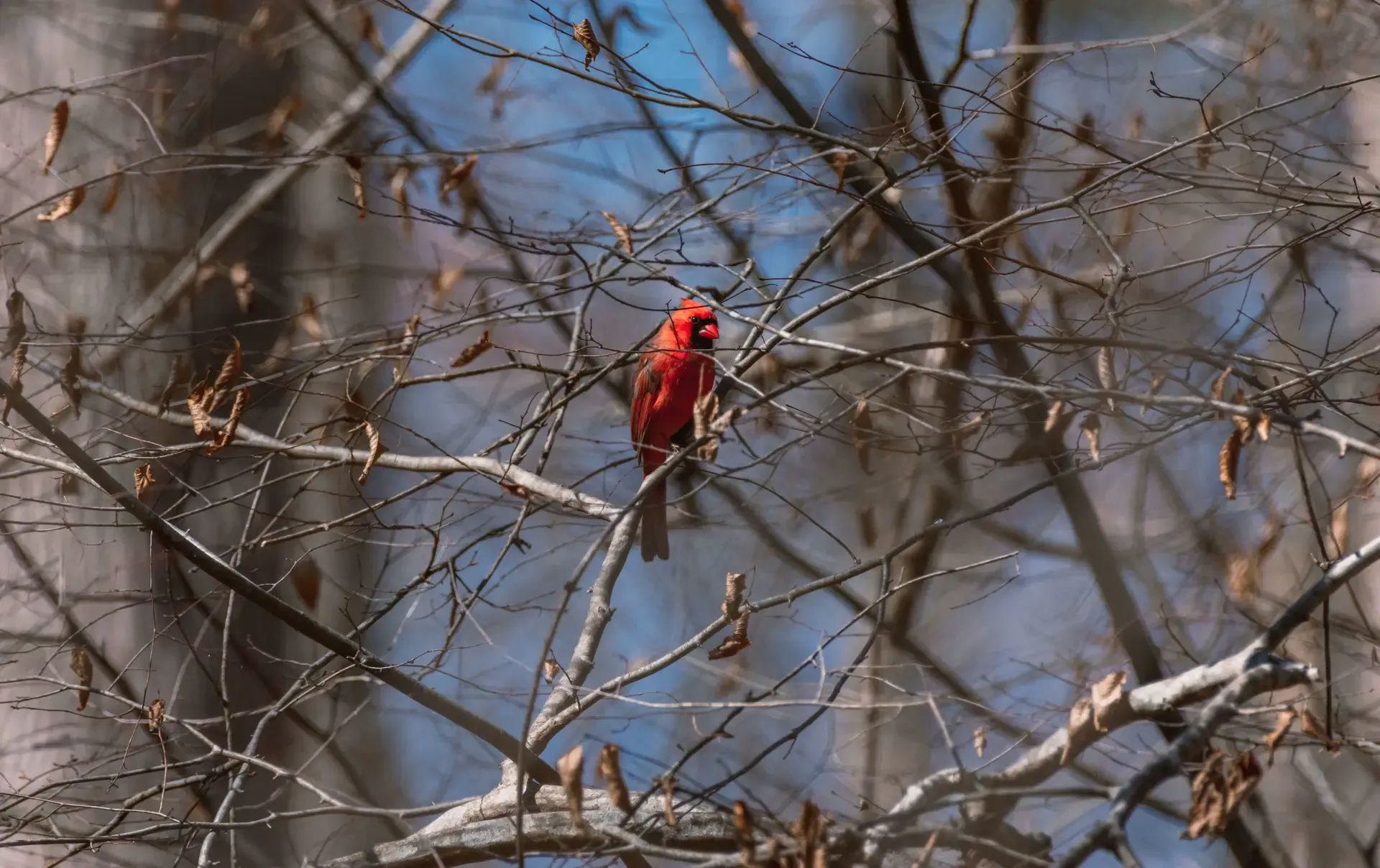
The winter months are surprisingly exciting time for forest owners wanting to enjoy wildlife on their land. A variety of bird species can be seen during this time of year, either passing through or hunkering down before snow starts falling. For family forest owners, it’s a great opportunity to take stock of both the bird species that call your woodlands a year-round home and those species that use your forest as a pitstop on their journey to warmer climates.
In this blog, we’ll highlight some of the common non-migratory bird species that you can find in your woodlands this winter. We’ll also give tips for wildlife viewing throughout the season. There are many ways to learn about and identify the birds in your area, from visually counting to identifying bird song. There is no “right” or “wrong” way to start bird watching, but getting outside and enjoying the woodlands around you is a great start.
Which Birds Stay for the Winter?
There are many species who will brave the cold of winter without migrating. Species with ranges from southern Canada to northern Mexico, or western Minnesota to the Atlantic Coast, will store food and fatten up for colder months. Approximately 10% of a bird’s body weight can be composed of body fat during winter months. Many species will also fluff out their feathers, giving the impression they are fatter than they really are, to retain body heat in their core. Below are some year-round inhabitants who live in the Midwest, the Appalachians, and Northeast where the Family Forest Carbon Program is available.
Tufted Titmouse
Tufted titmice are easily recognizable by their triangular, crested head, their grey plumage, and their white belly. These birds are very quick and agile, jumping through bushes, branches, and rocky slopes to feed on seeds, small insects, and spiders. When threatened, this bird has an alarm-like call that sounds like it’s fading into the distance; this is to give predators the impression the titmouse is flying away.
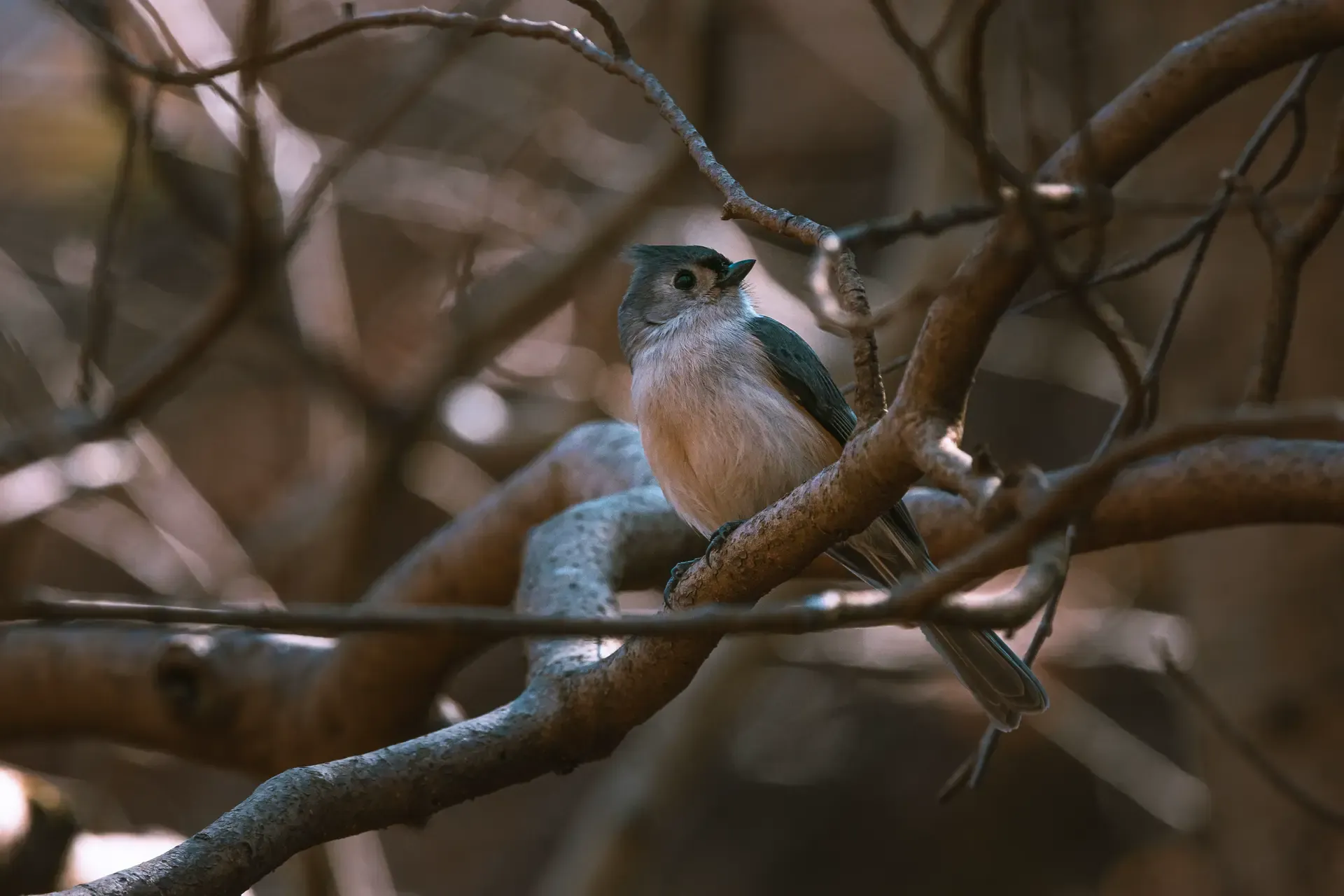
A tufted titmouse sits in the underbrush as it surveys for worms or other tasty morsels below. ©Stephen Taglieri
You can commonly spot this species in family units, with offspring helping to raise younger siblings. Outside of breeding season, these families can be spotted in mixed flocks with chickadees, a close relative of titmice.
Northern Cardinal
With males showing a bright red plumage and a black “beard,” and females boasting rich brown feathers with red-maroon wings, tails, and crests, the northern cardinal can be easily identified. They get their color from the berries they eat that contain carotenoids which create the bright reds, oranges, yellows, and pinks in their feathers.
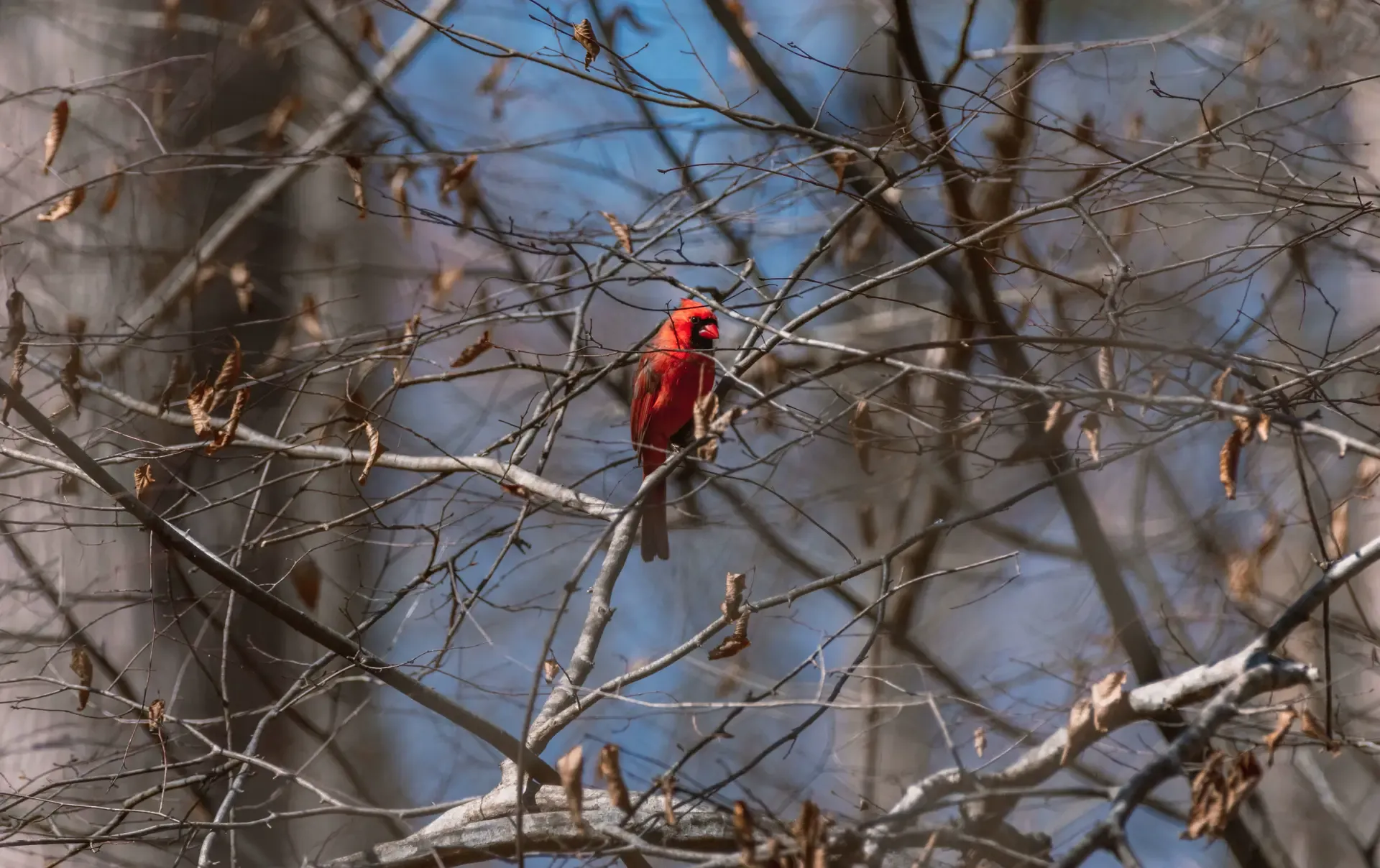
A northern cardinal sits on a tree branch before flying off through the fall foliage. ©Stephen Taglieri
Cardinals, given their name because a male’s bright red plumage reminded naturalists of the crimson robes worn by cardinals in the Roman Catholic Church, also have a very distinct triangular orange beak and a pointed crest of feathers which can be raised when the bird is on alert. Originally from the southern U.S., the northern cardinal has gradually expanded its range north since the mid-1800’s. Now, it can be observed from Minnesota to Maine, and all the way south to Florida. With car -alarm-like calls of “cheer, cheer, cheer” and “birdie, birdie, birdie,” you will most likely hear these birds before you see them.
Barred Owl
Barred owls are silent, nocturnal hunters that live in many mature forests across the Eastern U.S. With a home territory of approximately 700 acres, barred owls hunt nocturnally using their keen eyesight. Many prey animals will never hear this species coming because owls lack the water-resistant oils that insulate and protect most birds but make them noisy when flying. Mating for life, barred owls become highly territorial when they set up their nesting sites. Usually nesting in tree hollows, their chicks will hatch and stay around the nest as they mature to adulthood. Rarely straying from the nest, a chick can grow to be 20 inches tall before leaving home as a large adult predator. As climate change occurs, barred owls have been slowly expanding their range westward and have begun to outcompete their smaller Pacific relatives, the spotted owl.
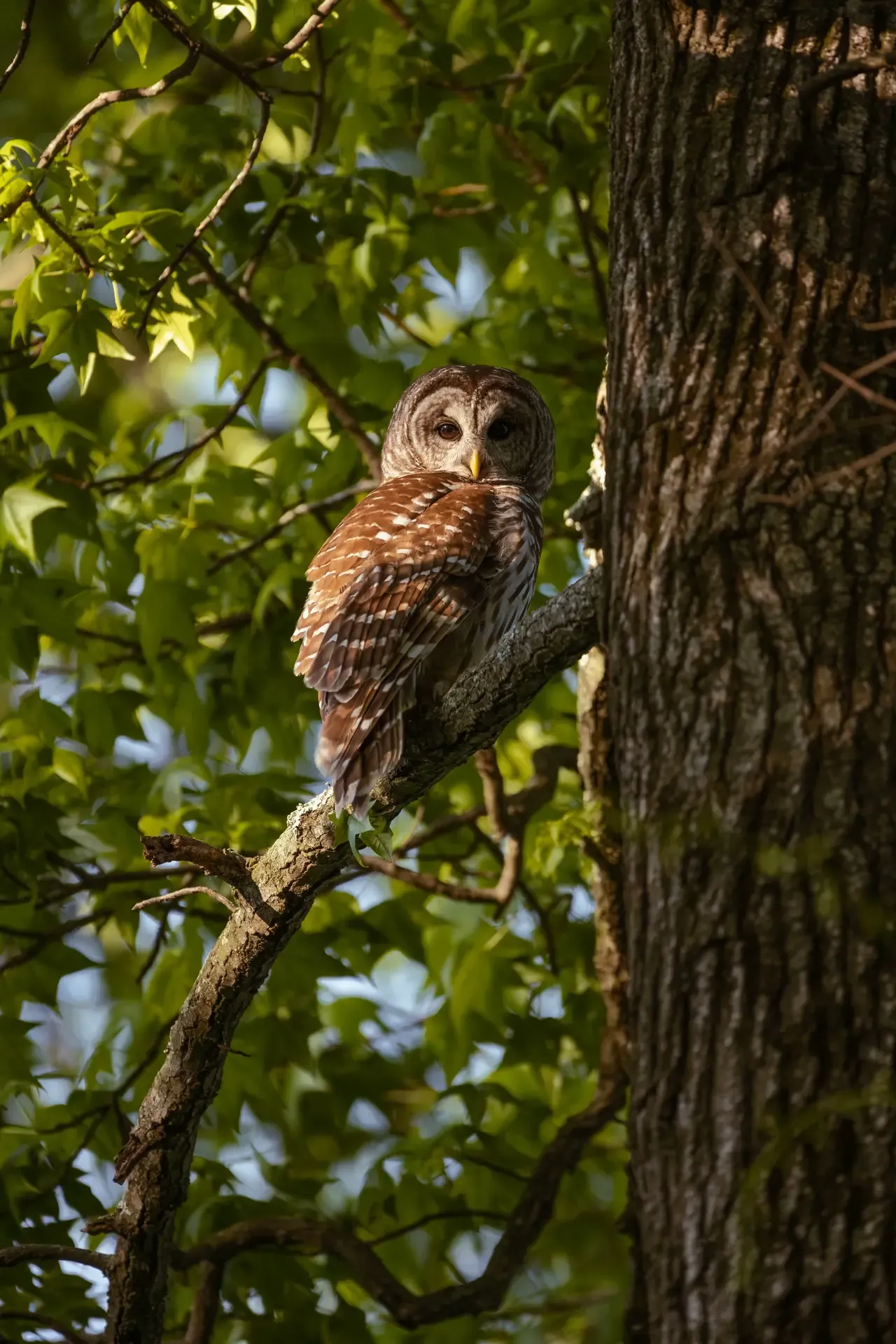
Barred owls will raise their young until they are able to fly from the nest. This mother owl perches on a tree branch a few meters from her youngster. ©Stephen Taglieri
Encouraging Birds to Visit Your Property
If you are interested in attracting bird species to your property, here are a few tips to make your efforts safe and successful.
If you’re planning to put up a bird feeder, make sure to thoroughly wash and dry the feeder before refilling it. Bird feeders are a gathering place for birds and humans, allowing pathogens to collect and disease to spread. In recent years, feeders have been a major contributor to the spread of house finch eye disease, trichomoniasis, and avian influenza.
When you’re thinking about your feeder placement, don’t put your feeder too close to windows. Clear windows can lead to bird collisions, injuring many animals each year. If you’re actively attracting birds to your property, especially near your house, consider buying anti-collision window tape so birds are better able to avoid flying into your windows. You can also build your own anti-collision window decals.
You can help many species find a safe place to live, stop-over, and recharge when needed. Many bird species are actively threatened by non-native predators, window collisions, pesticides, microplastics, and climate impacts. By managing your woodlands for healthy bird populations, many species are given the opportunity to thrive and reproduce.
The Family Forest Carbon Program offers family forest owners expert guidance on how to improve the health of your woods, create habitat for wildlife, and treat invasive species.
If you’re interested in connecting with forestry professionals to create a forest management plan that aligns with your goals, then look into the Family Forest Carbon Program today. We’ll cover the cost of forestry consultations and guarantee annual payments to landowners while assisting the stewardship of your woods. Click here to learn more.
Related Articles

December 20, 2023
We’re Making the Voluntary Carbon Market Work for Rural America
As the UN Framework Convention on Climate Change (COP28) ends, I’m grateful to know that AFF is representing the interests of U.S. family-owned forests
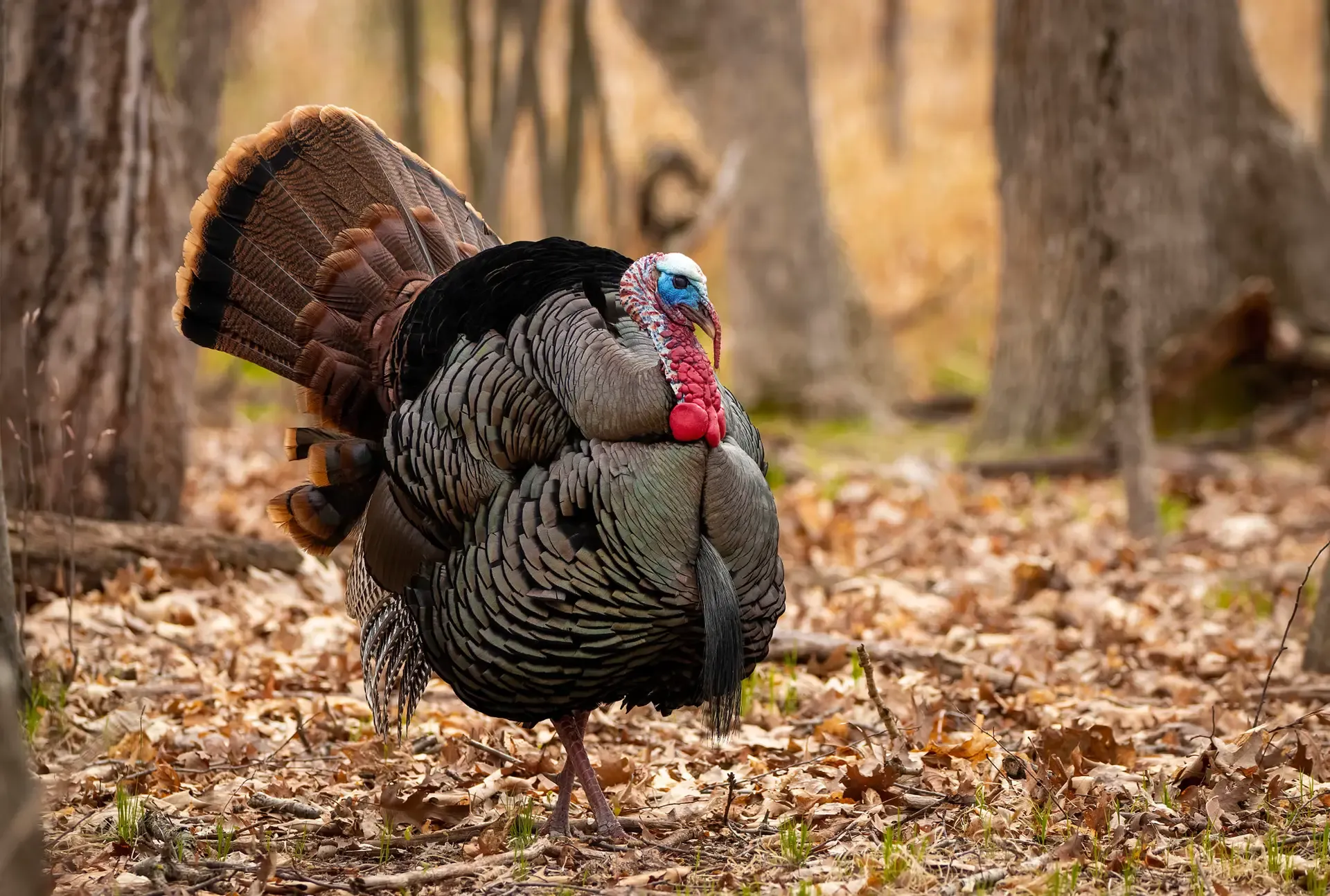
November 22, 2023
6 Ways to Attract Turkey to Your Woodlands
The wild turkey symbolizes a season of plenty in America. The following woodland management activities can help to meet the special needs of this unique bird.
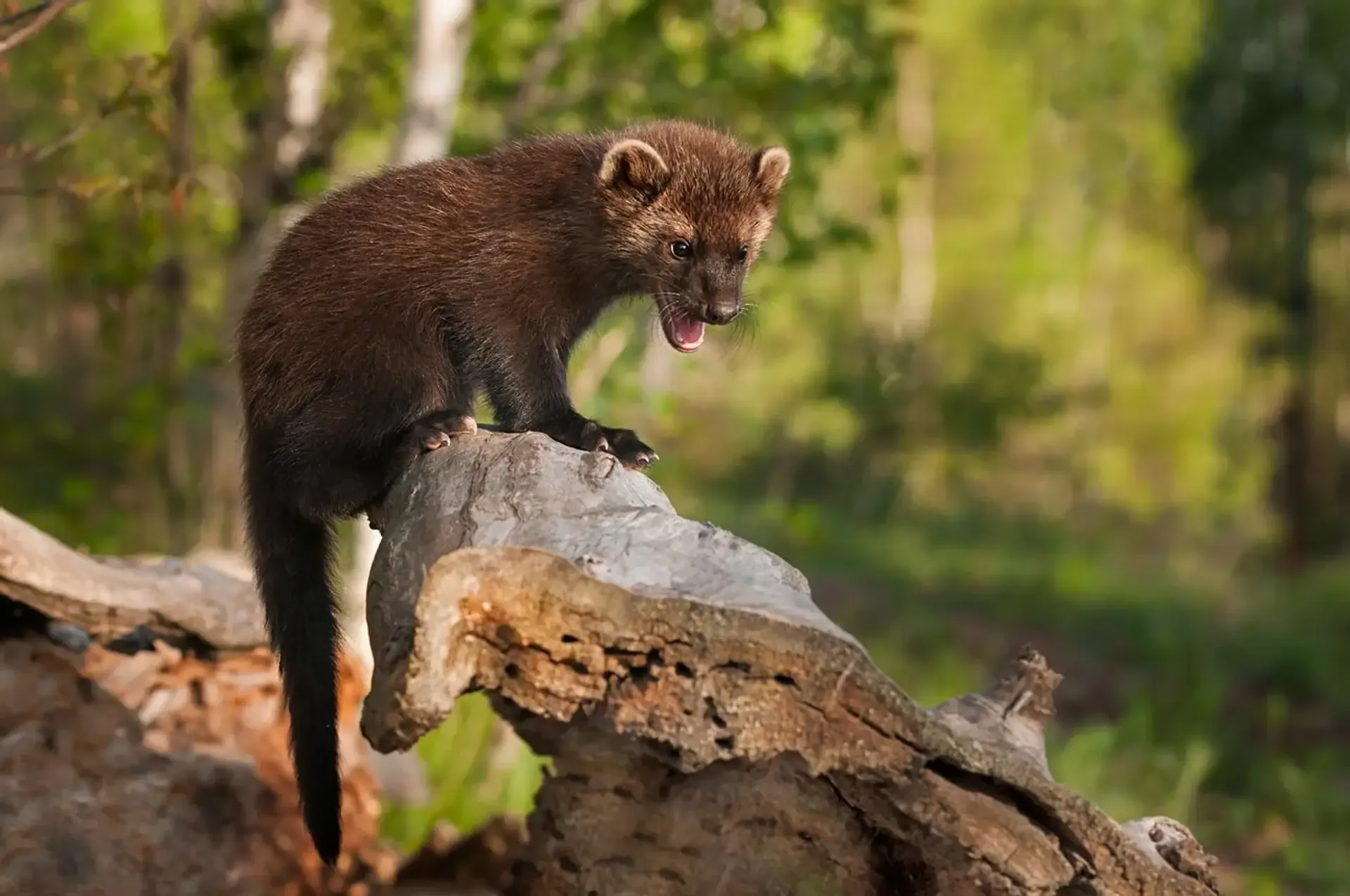
November 7, 2023
Managing Your Woods for Wildlife
With autumn colors spurring on winter migrations and the final excitement for animals getting ready for winter, it gives us a chance to think about wildlife in our lives.